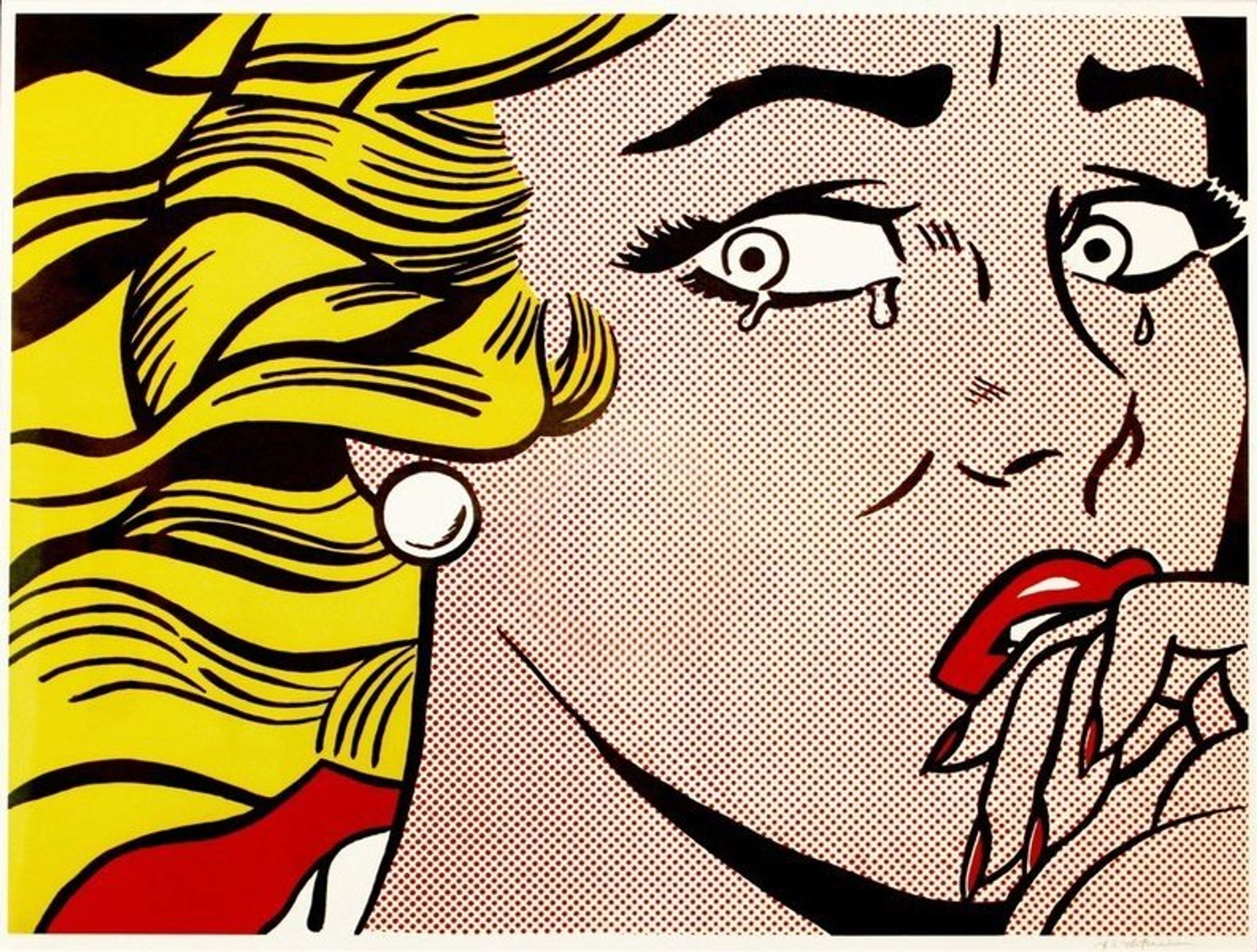10 Facts About Roy Lichtenstein's Perfect/Imperfect

 Imperfect 63 3/8″ X 88 7/8″ © Roy Lichtenstein 1988
Imperfect 63 3/8″ X 88 7/8″ © Roy Lichtenstein 1988
Interested in buying or selling
Roy Lichtenstein?

Roy Lichtenstein
290 works
Perfect/Imperfect is Roy Lichtenstein’s most extensive foray into Abstraction. The series is a departure for the Pop Artist, but reveals the influence of popular visual media and printing processes on his oeuvre.
Lichtenstein's Perfect/Imperfect takes his fascination with abstraction to the next level.
 Imperfect 67″ x 79 7/9 © Roy Lichtenstein 1988
Imperfect 67″ x 79 7/9 © Roy Lichtenstein 1988Throughout the 1970s and 80s, Lichtenstein increasingly developed a more abstract form of representation that departed from his comic strip-inspired works. Developing on his abstract approach in the earlier Mirrors series, Perfect/Imperfect completely reduces form to flat, geometric shapes and lines.
The series is somewhat nonsensical.
 Imperfect 44 3/4″ x 103″ © Roy Lichtenstein 1988
Imperfect 44 3/4″ x 103″ © Roy Lichtenstein 1988While most of his earlier works were critical interpretations of popular imagery, Perfect/Imperfect is a body of work that Lichtenstein himself described as "meaningless". As the artist said of the series: "It seemed to be the most meaningless way to make an abstraction ... dumb paintings ... [like] the nameless generic painting you might find in the background of a sitcom, the abstraction hanging over the couch."
The series is completely original.
 Crying Girl © Roy Lichtenstein 1963
Crying Girl © Roy Lichtenstein 1963As a true Pop Artist, Lichtenstein's imagery originated almost entirely from mass-circulated visual media. Perfect/Imperfect, on the other hand, is completely self-generated, borrowing nothing from existing imagery.
Lichtenstein altered his compositions based on the categories Perfect/Imperfect.
 Imperfect Diptych 46 1/4″ X 91 3/8″ © Roy Lichtenstein 1988
Imperfect Diptych 46 1/4″ X 91 3/8″ © Roy Lichtenstein 1988When working with a work he deemed 'perfect', Lichtenstein would contain his lines and forms within the frame of the composition. However, in his 'imperfect' works, Lichtenstein said "the line goes out beyond the rectangle of the painting, as though I missed the edge somehow."
The works are all continuous line compositions.
 Imperfect 58″ X 92 3/8″ © Roy Lichtenstein 1988
Imperfect 58″ X 92 3/8″ © Roy Lichtenstein 1988Though Lichtenstein added colourful shapes and dots to these works, the initial composition was formed of a singular line. As Lichtenstein described his process, "The idea is that you start with the line anywhere, and follow the line around, and draw all the shapes in the painting and return to the beginning."
The series reveals the influence of art history on Lichtenstein's oeuvre.
 Haystack #6 © Roy Lichtenstein 1969
Haystack #6 © Roy Lichtenstein 1969Though Lichtenstein is best known for his comic book-inspired works, the Pop Artist was continuously inspired by Cubism, Minimalism, and Abstract Expressionism. With these art historical influences, Lichtenstein created his Perfect/Imperfect works with reference to the traditions of abstraction.
Perfect/Imperfect is typical of Lichtenstein's tongue-in-cheek approach to abstraction.
 Imperfect Print For B.A.M. © Roy Lichtenstein 1987
Imperfect Print For B.A.M. © Roy Lichtenstein 1987Through the title of the series alone, Lichtenstein questions the notion of perfection permeating 'high' art. With his "meaningless" experimentation with abstraction, however, Lichtenstein made a mockery of these fabricated standards in the art world.
Lichtenstein used his iconic Ben-Day dots in these works.
 Imperfect Diptych 57 7/8″ x 93 3/4″ © Roy Lichtenstein 1988
Imperfect Diptych 57 7/8″ x 93 3/4″ © Roy Lichtenstein 1988Throughout his artistic career, Lichtenstein used Ben-Day dots to mimic industrial printing processes. Though these dots were often used to create flat colour in his comic strip-inspired portraits, the dots featured in all his Perfect/Imperfect works.
Lichtenstein's Imperfect works champion human error.
 Imperfect 63 3/8″ X 88 7/8″ © Roy Lichtenstein 1988
Imperfect 63 3/8″ X 88 7/8″ © Roy Lichtenstein 1988Particularly in the Imperfect works in this series, Lichtenstein championed human error by deliberately extending lines beyond the frame of his compositions. In doing so, the artist turned what looked like mistakes into an artful and intentional artistic choice.
Perfect/Imperfect is, perhaps, Lichtenstein's most unusual body of work.
 Imperfect 67 5/8″ x 91 1/2″ © Roy Lichtenstein 1988
Imperfect 67 5/8″ x 91 1/2″ © Roy Lichtenstein 1988The Perfect/Imperfect series is peculiar as it is one of Lichtenstein’s only series which is completely original. The artist was inspired by Frank Stella’s shaped canvases and by the Neo-Geo movement, and consequently created his most abstract series.